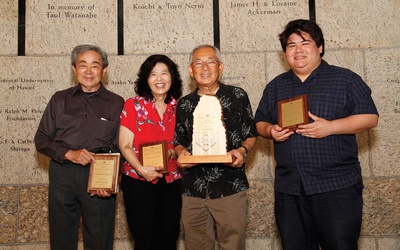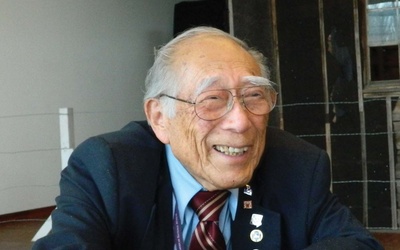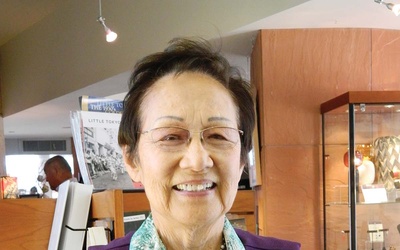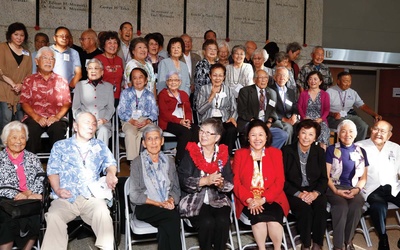Voices of the Volunteers: The Building Blocks of the Japanese American National Museum
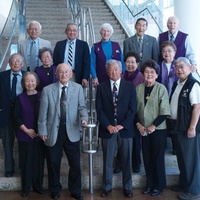
This series introduces the experiences of the volunteers at the Japanese American National Museum from the book Voices of the Volunteers: The Building Blocks of the Japanese American National Museum, which was sponsored by Nitto Tire and published by The Rafu Shimpo.
A few years ago, Nitto Tire began working with the Los Angeles Japanese-language newspaper The Japanese Daily Sun to interview the Japanese American National Museum (JANM)’s volunteers. When Nitto Tire approached The Rafu Shimpo in late 2014 to edit and compile these interviews into a book, we were happy to do it. As a former JANM intern, I knew how important the volunteers were, how hard they worked, and how much their presence humanized history.
In the process of editing this book, I read each story so many times I began to dream about them. I know that I’m not alone in this absorption. Everyone who gave his or her time to this book lived within these stories and felt their effect. That’s the power of a first-hand account.When visitors come to JANM for a guided tour, they experience a similar kind of accelerated intimacy that brings the Common Ground exhibit to life. The volunteers have been putting a face to history for thirty years. For all that time, they have upheld the story of our community. It’s time now for us to uphold their stories.
Edited by Mia Nakaji Monnier with additional thanks to Contributing Editor Chris Komai; Japanese Editors Maki Hirano, Takashi Ishihara, and Ryoko Onishi; and Volunteer Liaison Richard Murakami. Interviews conducted by Tomomi Kanemaru (The Japanese Daily Sun), Alice Hama (The Japanese Daily Sun), and Mia Nakaji Monnier.
Presented by 
Stories from this series
Kyle Honma
Dec. 28, 2015 • The Rafu Shimpo
Kyle Honma is a volunteer of the Hirasaki National Resource Center at the Japanese American National Museum. He started volunteering at the museum because of the influence of his paternal grandparents Hideo and June. They had volunteered for 16 years since the commencement of the Museum. Kyle is a Japanese American Yonsei and a fourth generation Mexican American. It was 1997 when he first visited the Japanese American National Museum with his grandparents. He was in the first grade at …
Hitoshi Sameshima
Dec. 14, 2015 • The Rafu Shimpo
Hitoshi Sameshima was born in Pasadena in 1921 to parents from Kagoshima, Japan. He was a junior at the University of Southern California when the war broke out in 1941. During WWII, his bilingual skills forced him into an uncomfortable position between Japan and the U.S. By 1942, he and his family were incarcerated at Gila River. He was drafted into the U.S. Army in 1944. Upon joining the Military Intelligence Service, which mainly consisted of Nisei linguists, Hitoshi was …
Yae Kanogawa Aihara
Nov. 30, 2015 • The Rafu Shimpo
Of all the Japanese-speaking docents at the Japanese American National Museum today, Yae Kanogawa Aihara is the last and only Nisei of the group who experienced the concentration camps during WWII. The rest were born and grew up in Japan, or Kibei who learned the language while growing up there. Yae started to learn her Japanese as a child and continued to learn it in Texas during WWII. Born in Tacoma, Washington, Yae was 16 when the war began. Her …
Masako Iwawaki Murakami
Nov. 16, 2015 • The Rafu Shimpo
Masako Iwawaki Murakami’s parents seldom talked about the years the family spent in an American concentration camp during WWII. Masako was 8 years old at the time and remembers how earnestly her mother and father tried to maintain a sense of normalcy for their children in spite of the extraordinary circumstances brought on by the Japanese attack on Pearl Harbor. One day recently, Masako came across a letter her mother had written to a friend at another concentration camp in …
Introduction
Nov. 2, 2015 • The Rafu Shimpo
In the beginning of most community organizations, there are volunteers. If one were to study American nonprofit entities, whether they’re devoted to history, culture, social services, or fighting disease, a common theme is that the enduring groups, big and small, are fueled and sustained by the incalculable contributions of their volunteers. Volunteers provide their skill, experience, leadership, time, money—and often all of the above—to a special mission or cause. This booklet, envisioned and sponsored by Nitto Tire and translated, written …

